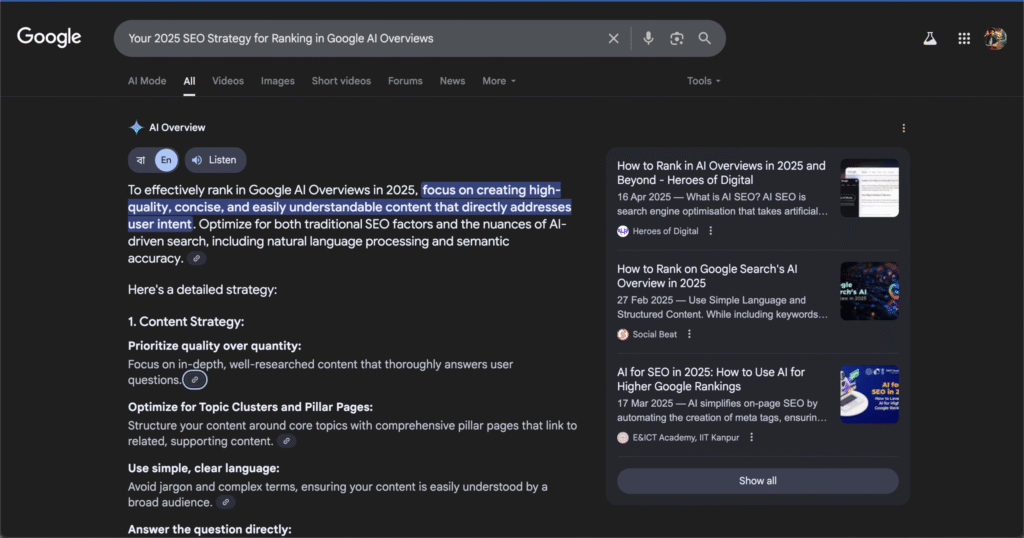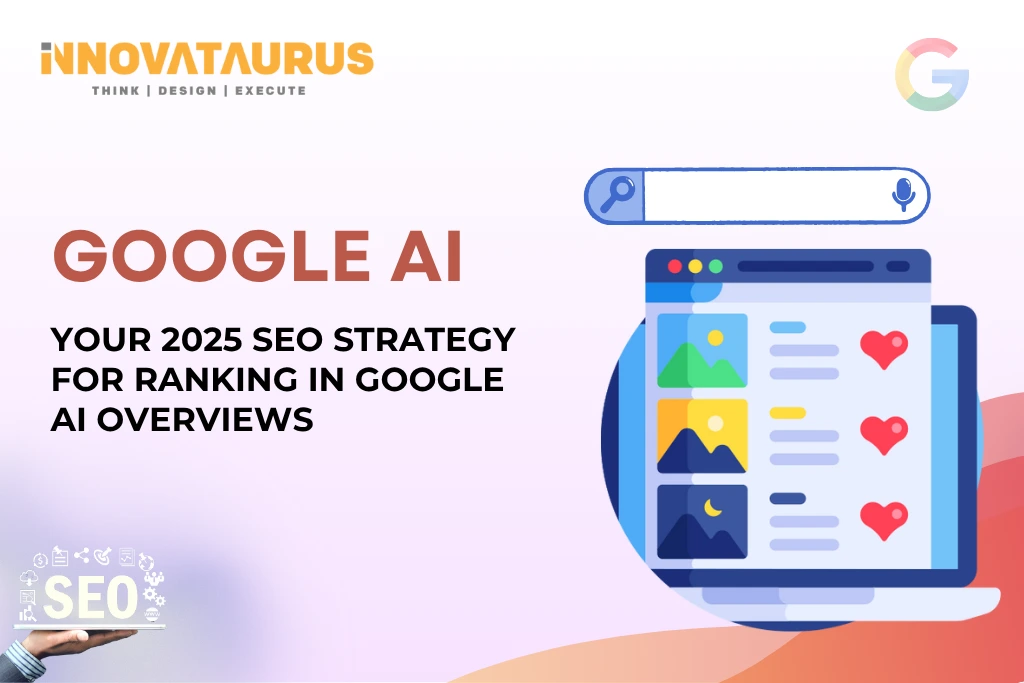Mastering Google AI Overviews: Your Blueprint for 2025 Search Success
In the rapidly evolving landscape of search, merely ranking on Google is no longer the ultimate goal. The spotlight has shifted to Google AI Overviews, those crisp, AI-generated answers that appear right at the top of search results. If your content isn’t making it into these coveted snippets, you’re missing a significant opportunity for visibility, credibility, and influence.
This isn’t just another algorithm tweak; it’s a fundamental shift in how Google delivers information, powered by its Search Generative Experience (SGE). For content creators, marketers, and business owners, understanding and optimizing for AI Overviews is paramount for 2025.
What are Google AI Overviews and Why Do They Matter?
Imagine searching for “best protein for women” or “how to start a blog in India” and instantly seeing a summarized, conversational answer. That’s an AI Overview. They pull information from multiple trusted sources, offering users quick, comprehensive answers without needing to click through various links. Think of them as the next evolution of featured snippets – smarter, more contextual, and with generative power.

How they work:
- Understanding the Query: Google’s AI delves deep into your search intent, grasping the nuances beyond just keywords.
- Synthesizing Information: It then processes content from various trusted sources across the web.
- Generating a Concise Answer: The AI crafts a short, conversational, and comprehensive summary, often with links back to the original sources, allowing users to “dig deeper.”
Why this is a game-changer for you:
- Prime Visibility: AI Overviews sit above traditional organic results, making them the first thing users see. Appearing here is like hitting the SEO jackpot.
- Targeted Traffic & Authority: While they provide instant answers, AI Overviews still link to your site for more in-depth information. This means the traffic you receive is highly targeted, coming from users genuinely interested in your content. Moreover, if Google’s AI trusts your content enough to feature it, it significantly boosts your brand’s authority and trustworthiness.
- Increased Credibility: Especially in sensitive niches like health, finance, or parenting, being cited in an AI Overview signals to your audience that Google considers you an expert.
Your Actionable Guide to Appearing in Google AI Overviews
So, how do you get your content into these influential AI-generated results? It’s about aligning your content strategy with how AI processes and presents information.
- Provide Clear, Specific Answers:
- Directness is Key: AI loves concise, direct answers. Right after your H2/H3 heading, offer a short, crisp answer to the question posed in the heading.
- Match Search Intent: Use headings that directly address common user queries (e.g., “What is [X]?”, “How to [Y]?”).
- Example:
- H2: What is a Google AI Overview?
- Google AI Overview is an AI-generated summary that appears at the top of Google search results, providing a quick answer based on trustworthy sources.
- Leverage Structured Data (Schema Markup):
- Google’s AI “reads” code. Using Schema markup helps AI understand your content’s context and elements.
- Useful Schema Types:
Article,FAQPage,HowTo,BreadcrumbList. - Tip: If you use WordPress, plugins like RankMath or Yoast SEO make implementing Schema incredibly easy.
- Demonstrate Strong E-E-A-T (Experience, Expertise, Authority, Trustworthiness):
- This is Google’s core quality guideline, and AI strictly adheres to it.
- Show Your E-E-A-T By:
- Sharing real-life experiences (crucial for YMYL topics).
- Adding detailed author bios with credentials.
- Linking to reputable external sources.
- Ensuring your site is HTTPS secure and regularly updated.
- Write Like a Human, For Humans:
- While AI is smart, it favors content that feels natural and conversational. Avoid robotic or overly academic tones.
- Tips:
- Use simple, clear language.
- Incorporate examples and an FAQ section.
- Write as if you’re explaining something to a friend. The more naturally your content flows, the better AI will “connect” with it.
- Optimize for Long-Tail & Conversational Keywords:
- Users often phrase their search queries as questions or longer phrases when interacting with AI.
- Focus on Phrases Like: “How to appear in Google AI Overviews as a blogger,” “Tips to rank in SEO for AI search results in 2025.”
- Think Like a User: Consider how people naturally ask questions. Incorporate Latent Semantic Indexing (LSI) keywords relevant to your primary keyword to deepen content understanding.
- Keep Your Content Fresh and Updated:
- Google AI prioritizes up-to-date information. Outdated content is less likely to be featured.
- Maintain Freshness By:
- Regularly updating old blogs with new statistics and information.
- Refreshing headlines and meta descriptions.
- Adding new FAQs or relevant examples.
- Utilize Trustworthy Sources and Internal Links:
- Back your claims with solid data, studies, or government sources to establish credibility.
- Strategically link internally to other relevant content on your site. This demonstrates topical authority to Google.

Navigating the Challenges of Google AI Overviews
While the benefits are clear, there are hurdles:
- AI Chooses, Not You: Unlike traditional featured snippets, AI Overviews are dynamically generated from multiple sources. You can’t “claim” a single spot. Your goal is to be a consistently reliable source.
- Potential for Zero-Click Searches: AI Overviews aim to answer questions instantly. This can reduce click-throughs if the user’s query is fully satisfied within the overview.
- Solution: Offer “next steps” or additional value not fully summarized (e.g., a downloadable checklist, a tool, a case study) that encourages users to click through.
- Constant Algorithm Updates: The AI Overview experience is still evolving. What works today might be refined tomorrow. Stay informed about Google’s updates and adapt your strategy.
Final Thoughts: AI Isn’t Replacing You, It’s Rewarding You
Google AI Overviews are undeniably reshaping SEO, but they aren’t ending it. Instead, they are rewarding content that is truly:
- Helpful
- Conversational
- Updated
- Backed by experience and expertise
By focusing on creating high-quality, user-centric content that directly addresses queries in an easily digestible format, you significantly increase your chances of appearing in Google AI Overviews. It’s about adapting your strategy to the future of search and ensuring your content shines where user attention is increasingly focused.
Ready to make your content AI-ready? Start by reviewing your existing content with these guidelines in mind, and let’s get you featured in the new era of search!
FAQs
Are featured snippets the same as AI Overviews? No. While both appear at the top of search results, featured snippets typically pull a direct summary from a single webpage. AI Overviews, powered by generative AI, synthesize information from multiple trusted sources to create a more comprehensive and conversational answer.
Can small businesses benefit from Google AI Overviews? Absolutely! AI Overviews level the playing field by valuing content quality, E-E-A-T, and clear answers over traditional domain authority alone. Small businesses with highly relevant and authoritative content can gain significant visibility.
How do I optimize my content for AI Overviews? Focus on clear, concise answers, use structured data, demonstrate E-E-A-T, write in a conversational tone, target long-tail keywords, keep content updated, and cite trustworthy sources.
Do I need structured data to appear in AI Overviews? While not always strictly mandatory, structured data (Schema markup) significantly helps Google’s AI understand and categorize your content, increasing your chances of being featured. It’s highly recommended.
What types of content are likely to be pulled into AI Overviews? Content that directly answers “how-to,” “what is,” “why,” and other informational, question-based queries is most likely to be featured. Comprehensive guides, FAQs, and factual articles with clear takeaways are strong candidates.
How is Google selecting content for AI Overviews? Google’s AI uses advanced algorithms to identify content that best matches user intent, demonstrates strong E-E-A-T, provides accurate and up-to-date information, and is presented in a clear, easily digestible format (e.g., direct answers, bullet points).
Can my blog appear in AI Overviews even if it’s not ranking #1? Yes! Unlike traditional organic rankings, AI Overviews can pull information from various sources, not just the top-ranking page. Your content’s quality and directness in answering the query are more important than its exact organic position.
How often are AI Overviews updated? Google’s AI is constantly learning and evolving. AI Overviews are dynamic and can update frequently as new information becomes available or as Google refines its generative AI capabilities. Staying on top of your content’s freshness is crucial.

